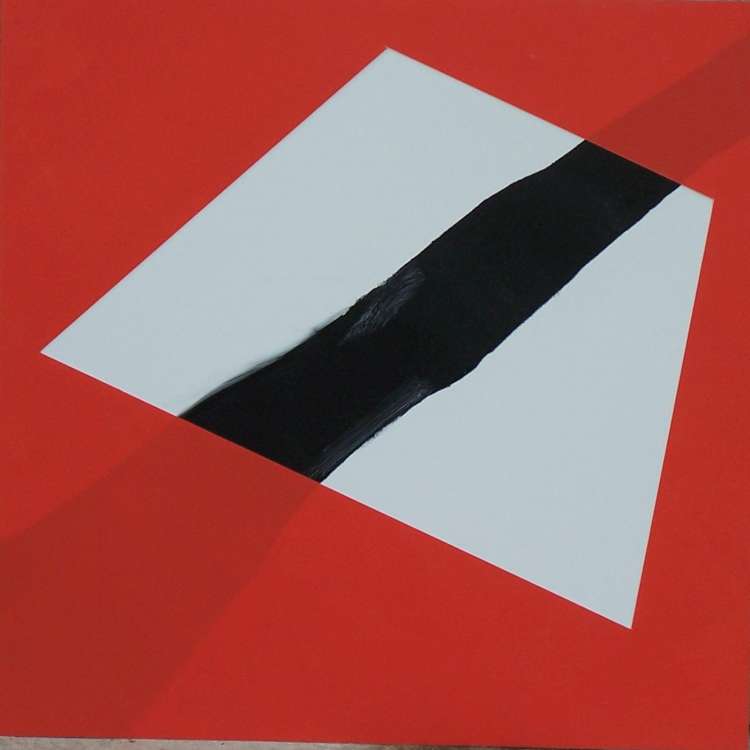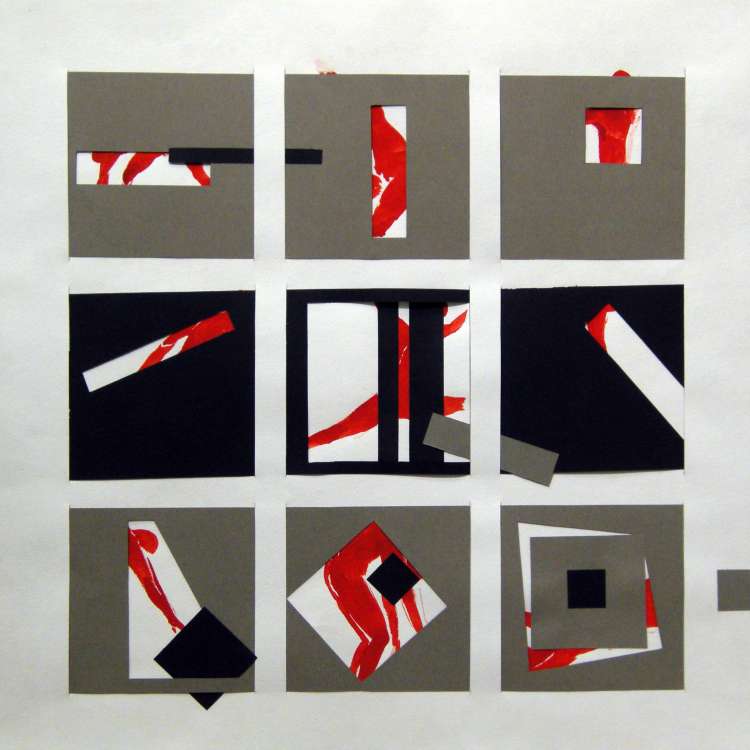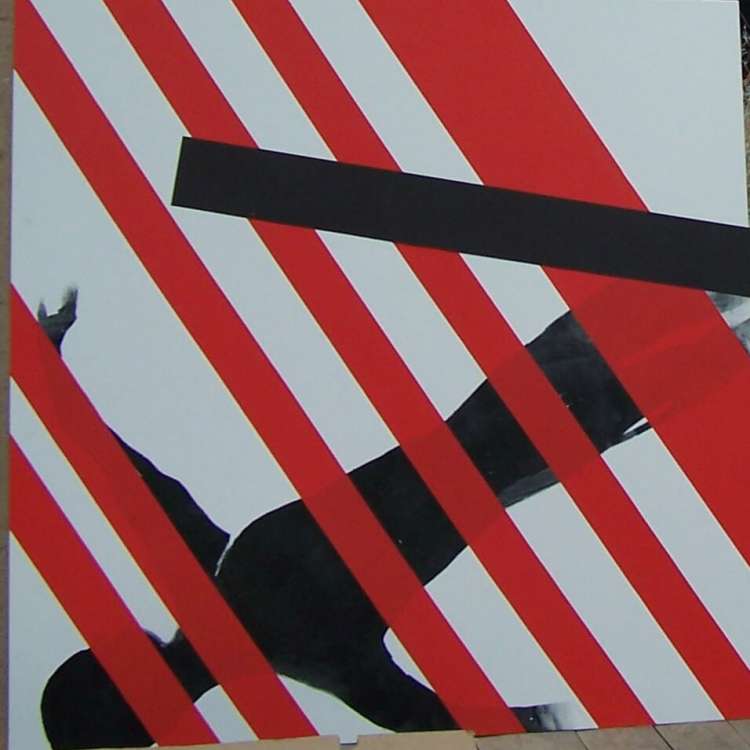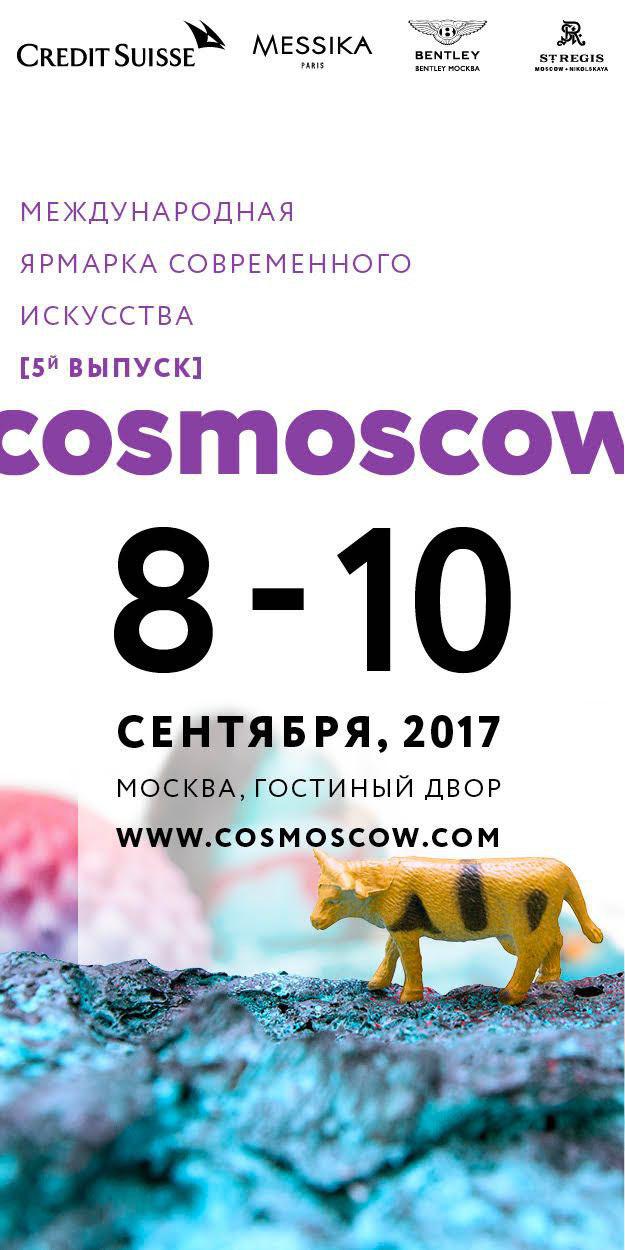A new series of Natalia Smolyanskaya’s works is connected with a motion itself. The artist is considering two types of moving. The first one is affiliated with a plasticity of a human body, its position in the space. The second one – with a representation of futurism and suprematism. From K.Malevitch and his contemporaries, members of the «Bauhaus» and «De Stijl» circles, Natalia Smolyanskaya takes two main colours – black and red. With the help of these colours, avant-gardist artists passed on the spatial arrangement dynamics of the objects. These colours, however, are used by Smolyanskaya to capture the emotions that are alien to the age in which their versatile possibilities were discovered. The exhibition «Frame Break» tells the story about loneliness, crisis, social and psychological «frame» and attempts to go beyond its limits – to «break».
Even in the avant-garde a frame was perceived as the enemy of art, because it created an illusory space of traditional painting. Therefore goes the desire either to abolish it at all, or to transform according to the objective of painting, to make a logical extension of the cloth (that was clearly manifested in makeshift frames of Giacomo Balla). A frame in Smolyanskaya’s works is comprehended not as a matter of picture design, bus as an invisible boundary between the works and reality. The main objects of the exhibition are suprematist elements – rectangles and squares, which are standing in a space of painting on a transparent plastic freely, attached only by magnets. Due to a transparent base, these abstract figures, which vaguely reminiscent «The Dance» characters by Henri Matisse, exempt from the frame pressure and hang in the air. Their position in the air is not fixed by neutral or naturalistic background. Besides, they cast a real rather than painted shadow that brings them closer to sculpture, but not enough to give a physical weight and to deprive of an expressive lightness.
The basis for the graphics became a working experience with Anna Kuznetsova from by now splitted circle «The Blind», which worked in a rare for Russia sphere of a modern dance. Natalia Smolyanskaya made two performances – «Crossroads» and «Sister» as a scene designer and director. The experience with a theatrical space can be guessed because of the use of mobile elements, which allows shifting or correcting the works composition, according to the mood of the artist. Natalia Smolyanskaya used these techniques in her early artworks created for the «Polygon» exhibitions for the first time, though. A dancer in the Smolyanskaya’s performances has a double-ganger, a shadow or a doll-«sister», acting as a symbolic and a generalized reflection of «another life» of the original character. This is a dramatic view on the eternal theme of the artist and a model. To be more precise, the view on the artist and his or her works, on inner experiences, freezing in an unchangeable form. The main task of the figures in the exhibition «Frame Break» is to get away from certain objects and motionless feelings. They seem to be evading the spatial limits, choosing a constant movement. This sense is especially felt when looking at Smolyanskaya’s graphic arts, where we see a kind of sketch performances in front of us.
Futurists, who like technology, paint a vivid picture of the cars, trains or airplanes «dynamism». But Natalia Smolyanskaya is closer to lyrics. She shows rather «the dynamism of loss» – loss of a solid ground under the feet, loss of balance and placidity. Her figures do not strike heroic poses; they are always tilted, as if they are depicted at the moment of fall. Suprematist items that were once the symbols of art liberation from the imposed reality play a dual, even a mutually exclusive and incompatible role in the Smolyanskaya’s artworks. They limit the figures, overpressure and conceal fragments of bodies. On the other hand, it is they that are destined to go beyond the transparent pictures and to tear along to reality. Maybe, breaking the frame, they will serve for the Natalia Smolyanskaya’s characters as a rescue trap into the world.
V. Diyakonov






